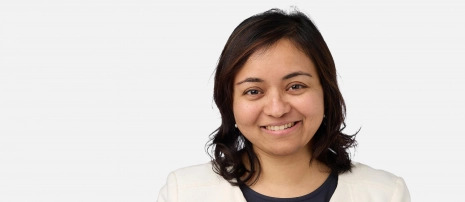
New OECD guidance on Amount B (BEPS 2.0) – where are we?
On 19th February, the OECD/G20 Inclusive Framework on Base Erosion and Profit Shifting published its report on Amount B under Pillar 1, which intends to provide a simplified and streamlined approach to transfer pricing compliance for entities engaged in baseline marketing and distribution activities.
This presents the opportunity for a simplified route for companies in countries that adopt Pillar 1 amount B to be compliant for business that would normally be described as Limited Risk Distributors “LRD’s”, joining other provisions in the guidelines such as the established 5% low value-added services safe harbour.
As reported by multiple jurisdictions, between 30% to 70% of transfer pricing disputes in these countries relate to entities engaged in baseline marketing and distribution activities. The OECD’s aim for introducing Amount B is therefore to enhance tax certainty and to relieve compliance burdens for taxpayers and tax administrations alike, particularly those in “low-capacity” jurisdictions with limited transfer pricing resources in their respective tax authorities.
The current OECD guidance (OECD Amount B Report, February 2024), published on 19 February, has been incorporated into the OECD Transfer Pricing Guidelines for Multinational Enterprises and Tax Administrations 2022 as an Annex to Chapter IV, with additional guidance expected shortly (the February document indicated by 31 March 2024, but this has been delayed). This is the latest development in the ongoing Amount B work, which builds on and incorporates the comments from the OECD’s July 2023 public consultation document on Amount B (July 2023 Amount B document).
There is no revenue threshold for Amount B, unlike the other provisions of Pillar 1 and Pillar 2 meaning this development would be applicable to smaller businesses engaged in international distribution activities.
Main points from the OECD report
Qualifying transactions to which this new safe harbour will be applicable
- Buy-sell marketing and distribution transactions where the distributor purchases goods from one or more associated enterprises for wholesale distribution to unrelated parties;
- Sales agency and commissionaire transactions where the sales agent or commissionaire contributes to one or more associated enterprises’ wholesale distribution of goods to unrelated parties.
Scoping criteria
In-scope transactions must have the following criteria (which should be based on a 3-year weighted average with that 3-year weighted average ratio calculated on a year-on-year basis):
- The qualifying transaction must exhibit economically relevant characteristics; meaning it can be reliably priced using a one-sided transfer pricing method, with the distributor, sales agent or commissionaire being the tested party.
- The tested party in the qualifying transaction must not incur annual operating expenses lower than 3% or greater than an upper bound of between 20% and 30% of the tested party’s annual net revenues.
- The guidance in the OECD amount B report sets out the characteristics of in-scope distributors, which cannot, for example, assume certain economically significant risks or own unique and valuable intangibles.
- A 3-step simplified pricing framework with a 3-step process for determination of in-scope distributors has also been provided in the report.
- The pricing matrix has a total of 15 distinct target returns, with the overall range of return on sales ranging from 1.5% – 5.5%.
Exclusions
- Commodities, digital goods and services (including digital services) are excluded. If non-distribution activities are carried out in addition to in-scope transactions, the in scope transactions will be excluded if they cannot be adequately evaluated on a separate basis.
Elective process
- Jurisdictions can choose to apply Amount B to qualifying transactions of eligible baseline distributors in their jurisdictions for fiscal years commencing on or after 1 January 2025.
- A jurisdiction that chooses to apply the simplified and streamlined approach may choose one of the following two options:
- Option 1: A jurisdiction can allow tested parties within the country to elect to apply the simplified and streamlined approach.
- Option 2: A jurisdiction can specify that all taxpayers within the country should apply the simplified and streamlined approach where the scoping criteria are met.
Caveats
- The elective process currently adopted by the OECD could pose challenges on the application of the rules as well as providing certainty to taxpayers.
- The document has noted concerns raised by certain countries which could indicate some disagreements still being present among the Inclusive Framework countries.
Our Comments
- Irrespective of how the open questions / disagreements are resolved, we would highlight the need for taxpayers to have robust functional analyses in order to determine and categorise the in-scope and out-of-scope entities with regard to the baseline marketing and distribution activities.
- For now, it would be crucial for taxpayers to review and analyse the guidance to understand if they fall within the scope of Amount B, review jurisdictional implementation of amount B and model potential outcomes to determine if updates to the current transfer pricing model or policy are in order.
- There is also the possibility of miss-match, as at the time of writing we know that New Zealand has specifically opted out of this provision. Thus, while on the face of it this new safe harbour may reduce the amount of benchmarking exercises clients need to undertake, advice will still be required on the wider picture.
Where are we now?
Amount B has now taken flight with Ireland announcing the adoption of Amount B in its Finance Bill (10 October 2024), starting from chargeable periods on or after 1 January 2025. Other countries that have expressed an interest in adopting Amount B are Argentina, Brazil, Costa Rica, South Africa and Mexico, while New Zealand is the first country to confirm it is opting out of Amount B. As this is a constantly changing environment, taxpayers will need to pay close attention to developments.
Please feel free to contact Forvis Mazars UK if you have any questions on any of the above.














































